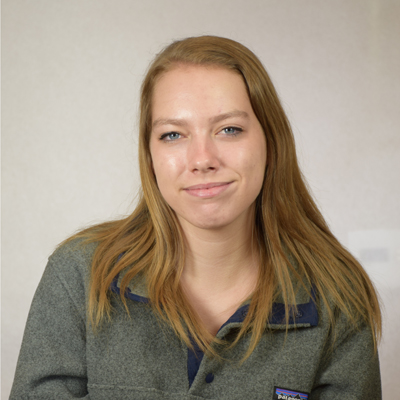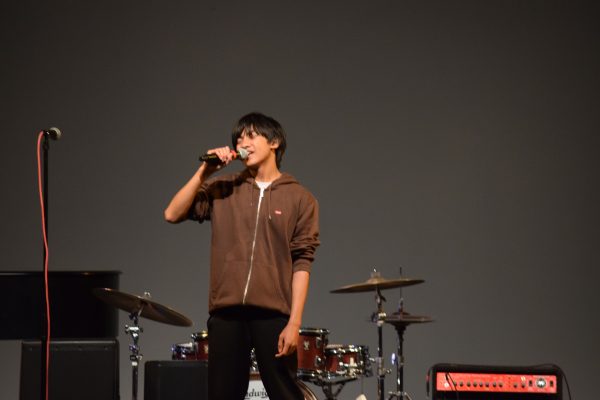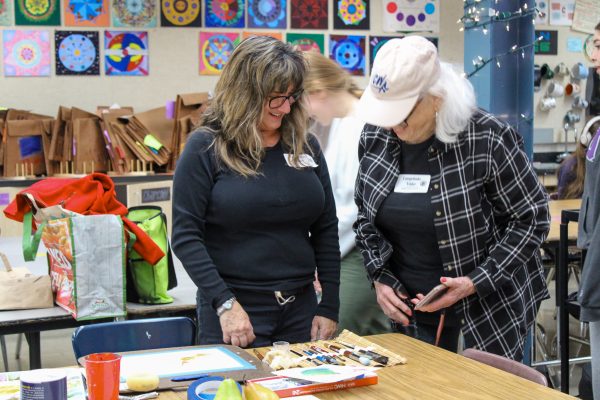New Partnership Measures Campus Radiation
January 29, 2016
UC Berkeley’s Department of Nuclear Engineering has launched a program, RadWatch, to investigate radioactivity in the Bay Area. The department will collect radiation data at Campolindo in an effort to involve high school students as part of their educational outreach mission.
According to Ali Hanks, a postdoctoral researcher in the Nuclear Engineering and Physics departments at UC Berkeley, RadWatch was originally created in response to “misinformation and fear in the Bay Area” after Fukushima’s nuclear power plant accident in March 2011. “Professor Kai Vetter and his research group at UC Berkeley and Lawrence Berkeley Lab formed the RadWatch group to provide the public with accurate, transparent and relevant measurements of radioactivity in our environment, especially in organic samples such as seafood,” she said.
Vetter is involved in research on the aftermath of Japan’s accident, said chemistry teacher Rachel Eaton. “He’s travelled there a good many times and he’s just taking a look at how the public reacts to high levels of radiation and what sort of good information they have versus misinformation that they have,” she explained. “And if they had had, maybe, more solidly established what good levels of radiation are in their area before this disaster had happened, there might be less panic about it as a result.”
Thus, the RadWatch team is “trying to establish what’s normal here.”
Eaton clarified: “Not that they anticipate any disaster here but if there ever were any sort of incident involving nuclear radiation they could hopefully reassure the public that its not as bad as it seems.”
The team hopes to confirm what a “safe” level of radiation is in the Bay Area, though Hanks said that the word is somewhat ambiguous because “the level at which health effects start to become significant is not actually well known, and is an area of ongoing research.”
Nevertheless, she believes public knowledge about the normalcy of background radiation is necessary. “I think there is a lot of information out there for people who want to be informed, but for non-experts it is undoubtedly challenging to really make sense of the varied and often contradictory sources of information,” Hanks explained.
Biology teacher Roxanna Jackman believes the media is to blame for the misinformation about “normal” levels of radiation. Eaton, however, believes it is really about a lack of knowledge. “I actually dont think [radiation] is something that people ever think about, so it’s kind of putting something on people’s radar that they hadn’t considered before,” she said. “It’s not to be alarming, it’s just to be informative that theres always a certain level of background radiation and the consensus is that that’s not harmful,” so long as the level is low.
Eaton and physics teacher Betty Watson came in contact with the department through attending an information workshop given by the group last spring. “While there, their lead professor asked if any teachers were interested in being involved in this effort that they’re making to get detectors placed on school campuses, so Ms. Watson and I decided we were interested,” Eaton explained.
Eaton and Watson kept contact with the group over the summer, and set up the “detector,” officially called a dosimeter, on November 1. According to Hanks, RadWatch has installed dosimeters on Cal’s campus in the Nuclear Engineering building, in Lawrence Berkeley Lab, and inside and on the roof of Etcheverry Hall. 2 high schools host dosimeters: Campolindo, in room D4 next to the weather station receiver, and Pinewood School in Los Altos. More high schools will be added to the project in 2016.
“The equipment consists of a device that detects radiation, particularly gamma radiation, and it just whenever a gamma ray strikes it sends a reading into their data pool,” said Eaton. “They’re keeping track of what the radiation levels are at various points throughout the Bay Area, and their vision is to install these at multiple places so they can just get a sense of what is normal background radiation.”
According to Hanks, the dosimeters detect ionizing radiation with a piece of silicon that has a voltage across it. “When a gamma ray interacts in the silicon, it transfers its energy to an electron in the silicon, and the electron then plows through the silicon, knocking a lot more electrons out of atoms,” she said.
“These electrons are then free to move in the electric field, which produces a pulse of electric current that can be amplified in a chip and measured by the Raspberry Pi computer to which it is linked. So the Raspberry Pi can count how many radiation interactions the silicon device is seeing,” she added. The team has also built Python software for the Raspberry Pi, which “counts radiation hits in 5-minute intervals, and then sends them to our web server to be displayed on the map.”
Hanks said that the dosimeter network allows for educational outreach, which is her main interest in RadWatch. “My interest is in working to improve science education more generally, and I think programs like DoseNet [the dosimeter network] are a great way to give teachers better tools for teaching science in engaging ways, and for connecting experts directly with interested students,” she said.
According to Eaton, the RadWatch group visited her science club at lunch in November to discuss their project and invite the club members to become involved. The team wants students to think of ways they could use the data collected, which Eaton said may not happen soon. “[The science club students] didn’t come up with ideas. They listened, They were curious, [but] as far as I know, no one’s come back to me with any concrete ideas. The researchers proposed some ideas to them.”
“The reality,” Eaton lamented, “is that Campo students tend to be pretty busy and overbooked, and so while my science clubbers are definitely interested in the project, nobody’s got the kind of time that they would need to invest in doing a really thorough project with them.”
Hanks hopes for “ongoing involvement from students interested in learning more about radiation detection, building detectors, and understanding how to process the resulting data,” to achieve “lasting connections” between Campolindo, UC Berkeley, and other involved high schools.
“Students can help us expand our website with mobile apps and improved data visualization. Data visualization is very important because it makes the data accessible and understandable to the public, which is a big aspect of our program. Currently we only show one type of graph to visualize the data. Also, we don’t have a good mobile app yet and students could help develop one,” said Hanks.
Hanks encourages students to contact Eaton or visit Berkeley RadWatch if they’d like to be involved with RadWatch.




